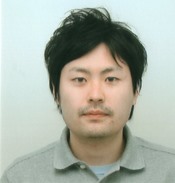Program Information
Multi-Institutional Validation Study of Commercially Available Deformable Image Registration Software for Thoracic Images
N Kadoya1*, Y Nakajima1 , M Saito1 , Y Miyabe2 , M Kurooka3 , S Kito4 , M Sasaki5 , Y Fujita6 , K Arai7 , K Tani8 , M Yagi9 , A Wakita10 , N Tohyama11 , K Jingu1 , (1) Tohoku University Graduate School of Medicine, Sendai,(2) Kyoto University Graduate School of Medicine, Kyoto,(3) Kanagawa Cancer Center, Yokohama,(4) Tokyo Metropolitan Cancer and Infectious Diseases Center Komagome Hospital, Tokyo,(5) Tokushima University Hospital, Tokushima, (6) Tokai University School of Medicine, Isehara, (7) Southern Tohoku Proton Therapy Center, Koriyama, (8) St Luke's International Hospital, Tokyo,(9) Osaka University Graduate School of Medicine, Suita, (10) National Cancer Center Hospital, Tokyo,(11) Tokyo Bay Rad. Onc. Makuhari Clinic, Chiba
Presentations
TU-AB-202-1 (Tuesday, August 2, 2016) 7:30 AM - 9:30 AM Room: 202
Purpose:The purpose of this study was to assess the accuracy of commercially available deformable image registration (DIR) software for thoracic images on multi-institution. Furthermore, we determined the variation in the DIR accuracy among institutions due to different DIR algorithms and DIR procedures.
Methods:Thoracic four-dimensional (4D) CT images of ten patients with esophagus or lung cancer were used. Datasets for these patients were provided by DIR-lab (dir-lab.com) and included a coordinate list of anatomical landmarks (300 bronchial bifurcations) that had been manually identified. DIR was performed between peak-inhale and peak-exhale images. DIR registration error was determined by calculating the difference at each landmark point between displacement calculated by DIR software and that calculated by the landmark.
Results:Eleven institutions participated in this study: Four institutions used RayStation (RaySearch Laboratories, Stockholm, Sweden), five institutions used MIM software (MIM Software Inc, Cleveland, OH) and three institutions used Velocity (Varian Medical Systems, Palo Alto, CA). The range of average absolute registration errors over all cases were 0.48-1.51 mm (right-left), 0.53-2.86 mm (anterior-posterior), 0.85-4.46 mm (superior-inferior) and 1.26-6.20 mm (three-dimensional [3D]). For each DIR software, the average 3D registration error (range) was 3.28mm (1.26-3.91 mm) for RayStation; MIM was 3.29mm (2.17-3.61 mm); Velocity was 5.01mm (4.02-6.20 mm). These results showed that there was moderate variation among institutions, even though the DIR software was same.
Conclusion:We evaluated the commercially available DIR software using thoracic 4D CT images on multi-center. Our results demonstrated that DIR accuracy differed among institutions because it was dependent on both DIR software and DIR procedure. Our results could be helpful for establishment of prospective clinical trials and widespread use of DIR software. In addition, in clinical care, we should try to find the optimal DIR procedure, when DIR was performed using thoracic 4D-CT data to calculate the accumulated dose.
Contact Email:

